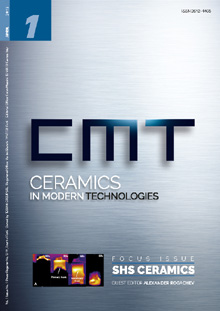- Home
- About us
-
Activities
-
Journals and magazines
-
Meeting and congresses
-
- Contact us

Abstract
The partial masking followed by the chemical etching is a well-developed method in the fabrication of microelectromechanical systems (MEMS). When there is an anisotropic chemical etching demand, the aqueous solution tends to have extremely oxidizing compounds especially hydrogen fluoride (HF). Consequently, the traditional masking methods such as photolithography which is based on the photoresist polymers may fail to protect the substrate as polymers also become removed by such a harsh etching solution. In the current study, a two-step deposition and chemical etching method is developed to form micron-sized arrays of silicon micropillars. A set of <100> silicon wafers undergoes a physical vapor deposition (PVD) of a silicon carbide (SiC) thin film. Prior to the deposition, an extremely fine mesh made of woven thin stainless steel wires is used to partially cover Si substrates. As a result, an array of micron-sized patches of SiC is deposited underneath each opening of the mesh while the rest of the substrate remains uncoated. In the next phase, the substrate is immersed in a highly corrosive solution (a mixture of hydrofluoric acid, nitric acid, and acetic acid). After giving some minutes of chemical etching, the uncoated parts of the substrate suffer from the etching process while those micron-sized patches formed previously to protect the substrate against the severe corrosive solution. Consequently, the bare silicon exposed to the solution is corroded and leaves a micron-sized pillar beneath the protective SiC coat. The etched substrates are used latterly to receive a thin film of the hydrophobic material such as polytetrafluorethylene (PTFE). The AFM analysis shows the topography of the surface and the morphology of the etched surface is studied by using the scanning electron microscopy (SEM). The results demonstrate extremely high wetting contact angle of the mentioned surface. It is proved that there is an optimum corrosion time which leads to the highest contact angle.